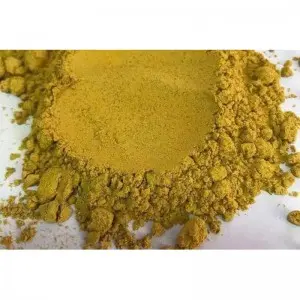Plum pollen is a highly valuable product that plays a vital role in the pollination of plum trees, ensuring healthy fruit development and higher yields in orchards. Harvested from the male flowers of plum trees, this pollen is rich in essential nutrients like proteins, sugars, and amino acids, which not only support the fertilization of female flowers but also benefit pollinators such as bees by providing them with the necessary sustenance. For orchardists, the use of high-quality plum pollen is essential for promoting cross-pollination, which results in better fruit set, uniformity, and overall crop health. In addition to its importance in agriculture, plum pollen is gaining recognition in the wellness and nutritional sectors due to its potential health benefits. Packed with antioxidants, vitamins, and minerals, plum pollen is believed to support immune health, boost energy, and improve skin health when consumed. As demand for sustainable and natural products grows, plum pollen’s multi-faceted applications in both agriculture and wellness make it a versatile and highly sought-after resource. By ensuring the availability of quality pollen, orchard managers can significantly improve the efficiency of pollination, leading to consistent, high-quality harvests while contributing to the health and vitality of the ecosystem.
Understanding the Impact of Plum Pollen on Fruit Development and Quality
Plum pollen plays a pivotal role in fruit development, directly influencing the size, quality, and yield of the harvest. As with many fruit trees, plums rely on cross-pollination to fertilize female flowers, which is essential for successful fruit set. The pollen from male plum flowers is transported by pollinators, such as bees, to the female flowers, where fertilization occurs, initiating the growth of the fruit. High-quality plum pollen is crucial for this process, as it contains the necessary nutrients and genetic material to fertilize the flowers effectively.
The quality of plum pollen affects how well it can trigger fruit development. Pollen that is fresh and viable increases the likelihood of successful fertilization, resulting in plums with consistent size and flavor. In contrast, low-quality or stale pollen may result in incomplete fertilization, leading to poor fruit set or smaller, misshapen fruit. Additionally, the timing of pollen release plays a significant role; if the male flowers release pollen too early or too late, they may miss the peak flowering period of the female trees, reducing the chances of successful pollination.
Good pollination, driven by healthy, viable plum pollen, is key to achieving high-quality fruit. Fertilized plums grow more uniformly and develop better color, texture, and flavor. Moreover, proper pollination leads to better fruit firmness and storage qualities, which are essential for both fresh consumption and processing. For orchardists, ensuring that high-quality plum pollen is available and used efficiently is critical for maximizing fruit yield, ensuring consistency, and improving the overall marketability of the plums.
Plum Pollen and Pollinator Diversity: How Different Species Affect Pollination Efficiency
The efficiency of pollination in plum orchards is heavily influenced by the diversity of pollinator species involved in transferring pollen from male to female flowers. Plum trees, like many fruiting plants, rely on cross-pollination for fertilization, and the diversity of pollinators can directly impact the success rate of this process. Various species of pollinators, including bees, butterflies, and even some flies, play distinct roles in the movement of plum pollen, each contributing differently to pollination efficiency.
Bees, particularly honeybees and native wild bees, are among the most efficient pollinators of plums. Their ability to collect and transfer large quantities of pollen, coupled with their natural foraging behavior, makes them essential to successful plum pollination. These bees are particularly effective in environments where plum orchards are abundant, as they can carry pollen from one flower to another, ensuring a high level of fertilization.
However, relying solely on one species of pollinator can limit pollination efficiency, especially in monoculture orchards. This is where pollinator diversity comes into play. For example, certain species of butterflies and hoverflies can complement bee activity, especially in areas where bees may be less abundant or active due to environmental factors such as weather or time of day. The presence of diverse pollinators helps spread the pollen more widely, leading to a higher fertilization rate and ultimately better fruit yield.
Moreover, pollinator diversity can also reduce the risk of poor pollination in the event of a decline in bee populations, a growing concern in many regions. Ensuring a diverse range of pollinators, from native bees to other insects, supports the resilience of orchards and helps maintain consistent pollination efficiency.

